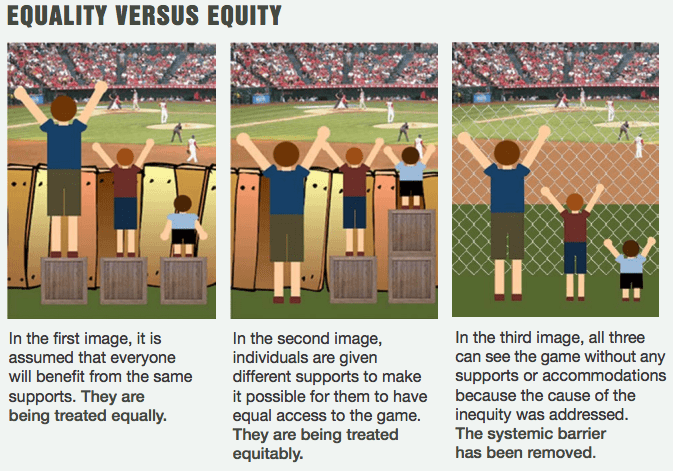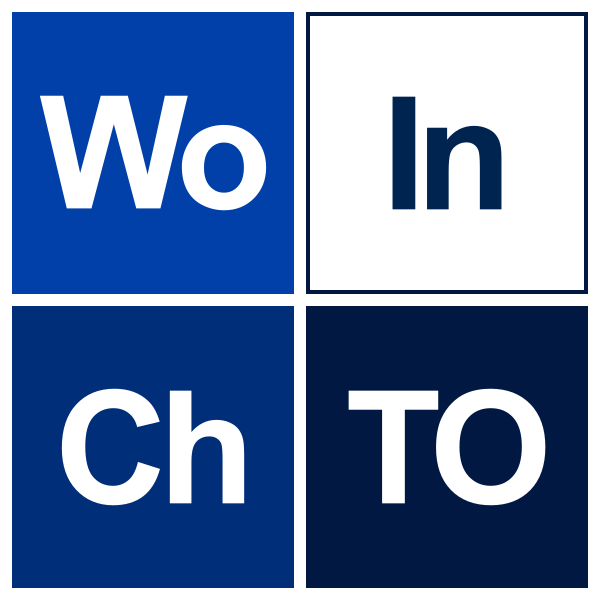FAQ
What is WICTO?
We are a student-led organization part of the CWIC network for advocacy and education on issues of equity, diversity, and inclusion within the Chemistry community and the broader STEM community. Our work is rooted in the ambition of dismantling oppressive systems that persist within the academy to make our department and university a more just and safe space for all.
What is the history of WICTO?
Our group was founded in 2014 by a small gathering of graduate students looking to make changes and develop a community of women in the field of chemistry. We are a constantly growing and evolving group and seek inclusion in the STEM community for all equity-seeking groups. In 2020 we changed our name from "Women in Chemistry Toronto" to Working towards Inclusivity in Chemistry Toronto to reflect our ongoing commitment to an intersectional approach to advocacy.
What are equity, diversity, and inclusion?
Equity, diversity, and inclusion (often referred to simply as "EDI") lie at the foundation of a safe, just, and respectful workplace or community.
Equity refers to the fair treatment of all people. Equity does not equal equality. Rather, it is the larger goal of removing the barriers – both visible and invisible - that individuals may face that keep them from gaining access to the same opportunities as others. Many of these barriers are systemic and rooted in white supremacy, which means that they cannot be addressed through changes to individual behaviour alone.

Image source: https://www.cawi-ivtf.org/sites/default/files/publications/advancing-equity-inclusion-web_0.pdf
Diversity refers to recognizing, respecting, and valuing differences among individuals. These can include differences in race, gender, sexuality, age, physical ability, health status, religious or spiritual affiliation, and body size, to name a few.
Inclusion means to create an environment where all individuals feel respected, accepted, and valued.
Equity, diversity, and inclusion work together – one cannot work without the other two. Equity eliminates barriers to allow for more diversity, and inclusion ensures that diverse voices are retained, valued, and advanced. Valuing diversity is critical to building inclusive and equitable workplaces.
How does EDI manifest in the workplace?
Practices built around EDI can help to create a safer, fairer, and more productive workplace for everyone. EDI can be implemented into many activities at the university, including:
- Hiring and recruitment (e.g., ensuring that job postings are shared and circulated to reach diverse range of potential applicants)
- Networking and scientific collaboration (e.g., introducing a new group member to a colleague)
- Research (e.g., correctly citing and crediting another person’s work)
- Teaching and training (e.g., ensuring that students have an internet connection to access class materials)
- Mentorship (e.g., respecting differences in personal priorities and career goals)
- Writing (e.g., being cognizant of gender-biased language when writing recommendation letters, see Schmader, et al.)
- Seminars (e.g., using large text and including closed-captioning in presentations for individuals that are hard-of hearing)
- Promotion & tenure (e.g., embracing parental leaves when assessing research productivity)
- Professional Development (e.g., compensating workshop organizers and facilitators for their labour)
- Social events (e.g., inquiring as to people’s dietary needs prior to an event where food will be served)
- Designing workspaces (e.g., ensuring that classrooms are wheelchair accessible)
- Utilities and building operations (e.g., designating single-occupancy and gender-neutral washrooms)
Making changes to these practices in the workplace can address some of the barriers facing equity-seeking groups. Addressing changes to the many individual interactions we have in our workplace can help to reduce biases and discriminatory practices
What can I do to work towards EDI in my workplace or community?
- Join WICTO. All department members are welcome to join!
- Educate yourself on the ways in which discrimination and injustice are systemically manifested in academia and in society more broadly. We have provided some resources to get started below.
- Acknowledge privilege and intersectionality. Privilege refers to one’s unearned advantage conferred by society. Having privilege does not mean that you faced no obstacles, nor that you didn’t need to work hard for your goals. It simply means that you did not have to face additional barriers because of inherent aspects of yourself (e.g., skin colour, age, or gender identity). For most of us, there will be some ways in which we are privileged and other ways we are disadvantaged; the intersection of a person’s identities can create unique modes of discrimination. This framework is known as intersectionality. Intersectionality is also a way to acknowledge differences and build solidarity between different groups who face systemic oppressions. For further reading on intersectionality, see interview with Kimberlé Crenshaw.
- Commit to allyship. Allyship is a verb – it requires actively listening, learning, and supporting those who do not hold your privilege. Allyship involves using one’s privilege to amplify the voice and to help relieve the work burden of those seeking equity or justice. Committing to allyship requires hard work, and should not be undertaken out of pity, sadness, or guilt. It demands continuous humility, self-reflection, and awareness of one’s privilege, space, and power. True allyship is not performative, and may often go unrecognized. Performative allyship occurs when words are not backed by actions or when actions are taken that draw attention away from or risk harming an equity-seeking group.
Further reading & resources:
On systemic injustice & discrimination in the academy:
- Academics on racism in universities: https://www.theguardian.com/education/2019/oct/24/monolithically-white-places-academics-on-racism-in-universities
- Racism in the academy (in Canada): https://www.universityaffairs.ca/features/feature-article/racism-in-the-academy/
- Breaking the barriers report, RSC http://www.rsc.org/campaigning-outreach/campaigning/incldiv/inclusion--diversity-resources/womens-progression/
- Diversity landscape of the chemical sciences, RSC https://www.rsc.org/globalassets/02-about-us/our-strategy/inclusion-diversity/cm-044-17_a4-diversity-landscape-of-the-chemical-sciences-report_web-2.pdf
- How Gender Stereotyping Impacts Women in STEM, Huffington Post https://www.huffingtonpost.ca/dr-imogen-coe/gender-stereotyping-stem_b_7423048.html?ec_carp=1342784690460263410
- The chemistry PhD: The impact on women's retention, RSC http://www.biochemistry.org/Portals/0/SciencePolicy/Docs/Chemistry%20Report%20For%20Web.pdf
- Gender in the Global Research Landscape: Elsevier Gender Report http://imogencoe.blog.ryerson.ca/files/2017/03/ElsevierGenderReport_final_for-web.pdf
- Understanding implicit bias https://implicit.harvard.edu/implicit/
- Schmader, T.; Whitehead, J.; Wysocki, V. H. A Linguistic Comparison of Letters of Recommendation for Male and Female Chemistry and Biochemistry Job Applicants. Sex Roles 2007, 57(7-8), 509–514. doi: 10.1007/s11199-007-9291-4
On privilege:
- White Privilege: Unpacking the Invisible Knapsacks by Peggy McIntosh http://convention.myacpa.org/houston2018/wp-content/uploads/2017/11/UnpackingTheKnapsack.pdf
- WHITE PRIVILEGE AND MALE PRIVILEGE: A Personal Account of Coming to See Correspondences Through Work in Women's Studies (1988) By Peggy McIntosh https://www.collegeart.org/pdf/diversity/white-privilege-and-male-privilege.pdf
- Black Feminist Thought in the Matrix of Domination. From Patricia Hill Collins, Black Feminist Thought: Knowledge, Consciousness, and the Politics of Empowerment (Boston: Unwin Hyman, 1990), pp. 221–238: http://www.hartford-hwp.com/archives/45a/252.html
- So You Want to Talk About Race by Ijeoma Oluo https://www.sealpress.com/titles/ijeoma-oluo/so-you-want-to-talk-about-race/9781580056779/
On EDI best practices:
- What does "equity" mean? https://ssir.org/articles/entry/what_the_heck_does_equity_mean
- Diversity, its challenges, and its benefits https://greatergood.berkeley.edu/topic/diversity/definition#what-is-diversity
- To learn inclusion skills, make it personal, Nature https://www.nature.com/articles/d41586-019-00282-y
- Enrolling and Supporting Women in STEM: Practical Steps to Take, Academic Impressions(https://www.academicimpressions.com/blog/enrolling-and-supporting-women-in-stem-practical-steps-to-take/
- How the entire scientific community can confront gender bias in the workplace, Nature https://www.nature.com/articles/s41559-018-0747-4
- How Higher Ed Can Fight Racism by Franci Diep https://www.chronicle.com/article/How-Higher-Ed-Can-Fight/248897/#.XtZ2nJ88YlV.twitter
- Actions Men Can Take to Create an Inclusive Workplace https://www.catalyst.org/research/actions-men-can-take-to-create-an-inclusive-workplace/
- Let’s Do it First and Talk About it Later: Rethinking Post-Secondary Science Teaching for Aboriginal Leaners by Michelle Hogue https://ineducation.ca/ineducation/article/view/154/643
- The Person You Mean to Be - How Good People Fight Bias by Dolly Chugh https://www.harpercollins.com/9780062692146/the-person-you-mean-to-be/
Other reading:
- The Equity Myth: Racialization and Indigeneity at Canadian Universities by Frances Henry, Enakshi Dua, Carl E. James, Audrey Kobayashi, Peter Li, Howard Ramos, and Malinda S. Smith.
- The Intersectionality Wars by Jane Coaston, interview with Kimberlé Crenshaw https://www.vox.com/the-highlight/2019/5/20/18542843/intersectionality-conservatism-law-race-gender-discrimination
- Inferior by Angela Saini
- Superior by Angela Saini
- Athena Unbound: The Advancement of Women in Science and Technology by Brian Uzzi
- The Skin We're In by Desmond Cole
- The Alchemy of Us by Ainissa Ramirez
